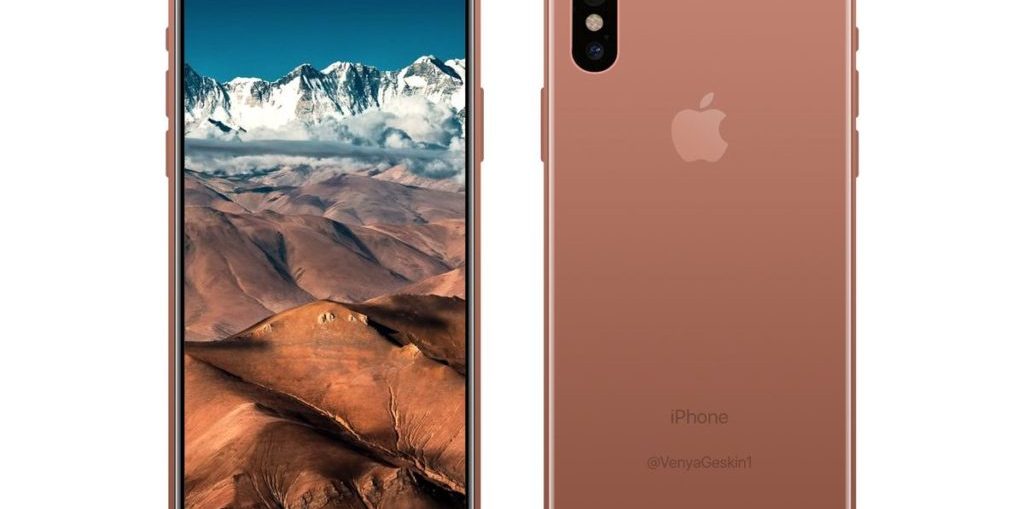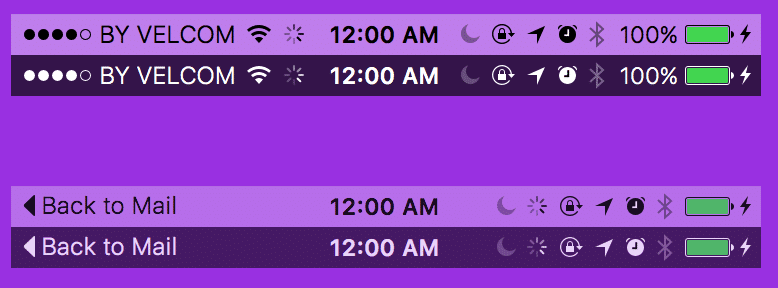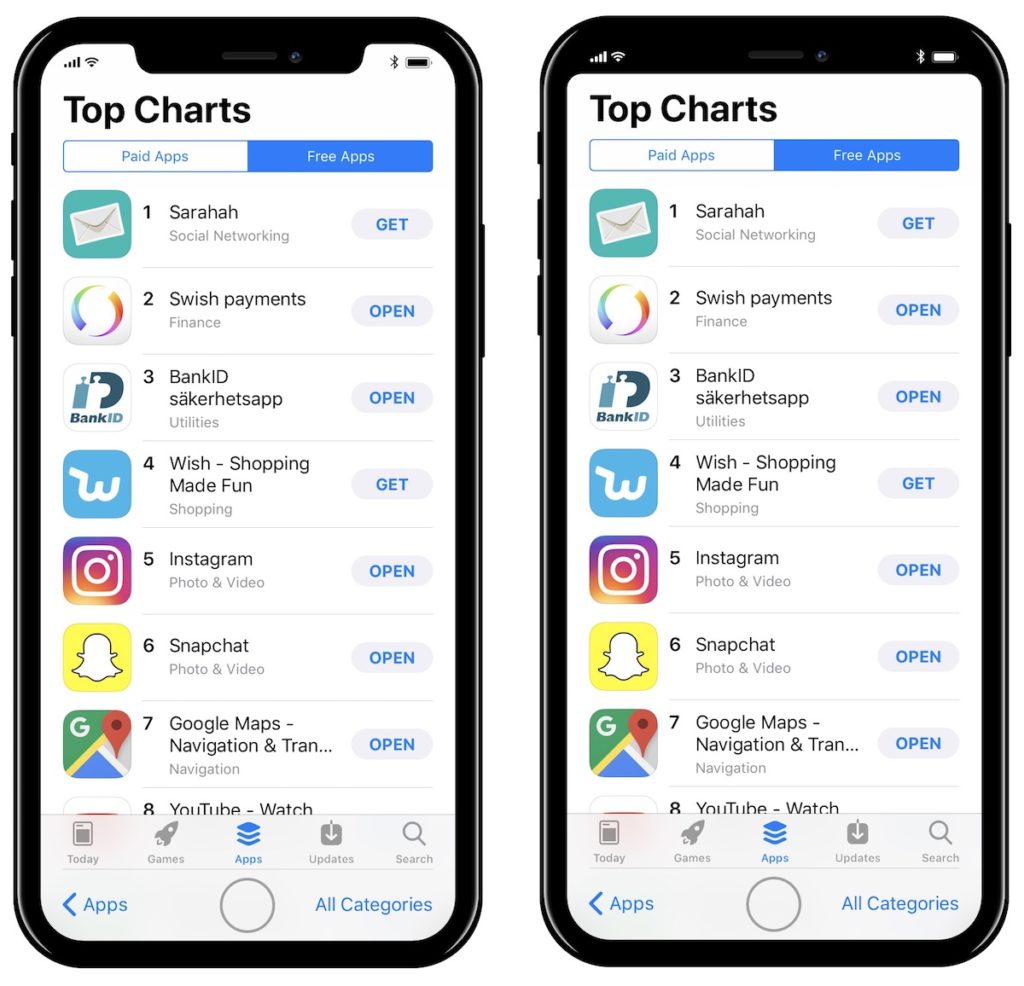At the beginning of last week, thanks to a big miss Apple, we learned a few details about the long-awaited iPhone 8 and other unreleased devices from the company. The update HomePod was accidentally uploaded to public servers on July 31st. And before Apple managed to remove it, millions of copies were downloaded and distributed all over the internet.

While this update was for the smart speaker Apple, it contained tons of information about iPhone 8 and the new Apple TV
Let's take a look at five of the most interesting finds in the update HomePod regarding iPhone 8.
1. 'top-notch' design
In the leaked update, confirmation of rumors about the intended design was hidden iPhone 8. The screen will occupy almost the entire front surface, and on top will wrap around the front camera, speaker and sensors. This design is called 'notch' and first saw the light on Andy Rubin's Essential phones and Sharp Aquos S2. Although there were no official sketches in the update iPhone 8, the prototype, codenamed 'D22', makes it clear that the 'notch' will be on screen for sure.
Props to @charavel for a quick mockup taking these numbers into account. This is what I expect usable screen space to look like on iPhone 8 pic.twitter.com/wyCmfHtusO
– Steve T-S (@stroughtonsmith) August 10, 2017
It clearly shows what the top part looks like iPhone 8. It will be interesting to see how Apple modifies the UI for such an unusual display. It is not yet clear where the time, which was previously in the middle of the bar status, will be displayed. The two remaining parts of the status bar in the corners will only be able to accommodate the username, battery level and percentage. It is still questionable where the icons Bluetooth, WiFi, geolocation, alarm clock, screen lock, different modes, etc. will be located.
 2. Face recognition
2. Face recognition
As rumors of iPhone 8 were just picking up steam, it was reported that Apple would improve its Touch ID technology, and it would even work under the display. We also saw fused case mockups iPhone with a fingerprint reader on the back just like in phones Android. The under-display fingerprint scanner has ceased to be a hypothesis after Qualcomm demonstrated such technology on a phone Vivo at the Mobile World Congress in Shanghai this year. Phones Android with this technology will not appear until 2018, but Apple has repeatedly proven its ability to be the first among other companies to introduce new functions.
However, the update HomePod mentions the presence of an infrared face recognition sensor, which means Apple could go in a completely different direction. In the code, the feature is called 'Pearl ID', it will work on sensors located next to the speaker and recognize the user's face to unlock the phone. It sounds surprising, but in theory, the technology should recognize your face, even when the phone is lying on a flat surface (for example, on a table). Another interesting detail recently discovered is that notifications will come without sound when the user looks at the screen. And if that's not enough for you, the company is working on something related to facial expressions, if the rumors are true. Perhaps this technology is related to a company that Apple bought back in 2015. The company is developing technologies for facial recognition.
You may ask, is it possible to trick the biometric system by showing a photo or video with the user to the front camera? By the way, this trick has already fooled the face recognition system on the Samsung Galaxy S8. Well, the next demo video from RealFace (from 13:52) shows that it won't work. Apple acquired RealFace earlier this year.
There are other hints that face recognition will be actively used by the system. For example, it should work with Apple Pay. Third-party apps will also be able to use the new biometric authentication mechanism. Just a couple of days ago it was reported that the new iPhone could be equipped with 'multi-biometric options'. Could this mean a combination of face recognition and fingerprint scanning? Will Face ID work in the dark? We'll have to wait until September to find out the answers to these questions.
3. Retina display
From the stream of information found in the update HomePod, we learned that iPhone 8 will finally have a higher resolution display. The 5.8-inch display should be 2436 x 1125 pixels from edge to edge. That's over 1920 x 1080 pixels on 5.5-inch iPhone Plus models. By the way, iOS downsamples the original 2208 × 1242 (3x Retina) resolution to 1080p on large iPhone.
To a particularly attentive reader, the numbers 2436 × 1125 will seem familiar, since a few months ago they were already mentioned by the famous analyst Ming-Chi Kuo. However, Kuo assumed that this resolution would only be in the main area (the rest would be occupied by the 'functional area' with a virtual home button and other elements), and the entire screen would be 2800 × 1242 pixels. John Gruber of Daring Fireball very politely explained why Kuo was wrong. He believes that the resolution of the entire display iPhone 8 will be 2436 × 1125 pixels.
If the resolution iPhone 8 is true, the pixel density will grow to 462 pixels per inch. That's a marginal advance from 400 pixels on the 5.5 “iPhone Plus models, but an impressive 326 on the 4.7” models. If Gruber's calculations are correct, iPhone 8 won't need to compress the quality of the content like the Plus models do. It is very likely that this will turn out to be true, since the numbers 1920 × 1080 and 2436 × 1125 are mentioned in the merged code.
There are little tidbits in the OS suggesting upcoming iPhone will have a 3x screen at 1125 × 2436. Hard to gauge what that will mean for devs pic.twitter.com/SK8QjOAfDt
– Steve T-S (@stroughtonsmith) July 31, 2017
Other display data mentions a wake-up mechanism that has been used for years on some phones Android and Lumia.
4. Virtual Home button and functional area
The bottom part iPhone 8 is no less interesting: the legendary home button will be replaced by a virtual one for the first time. Last year we already got a taste of how this works on iPhone 7 and iPhone 7 Plus. The mechanical home button was replaced with an area that simulated the sensation of being pressed by a vibration motor. We can assume that pressing hard on the virtual button iPhone 8 will work the same way.

The update HomePod states that the virtual button will hide when playing a video in full screen, so that almost the entire surface of the 5.8-inch display will be used from edge to edge.
There is also some interesting information about using the area on the sides of the virtual button. There have been previous theories of something akin to a short-path touchbar, but recently a more realistic concept has emerged. The former systems specialist Apple believes that navigation and menu icons that were previously at the top of applications will be moved down. Thus, it will be easier to reach them, which is important given the size of the new iPhone 8.
5. 4K video with 60fps and other functions
The leaked update also mentions the camera iPhone 8, which, as you probably noticed, will be double and located vertically. Both the front and rear cameras will be able to record 4K video at 60 frames per second. This will be a big improvement over past phones that could only record 4K at 30fps. This also indicates an improvement in the performance of the A11 processor on which the phone will run.
The update code also mentions the 'SmartCamera' function, which will be able to automatically detect scenarios (eg fireworks, snow, sunset, sports, etc.) and adjust the camera to suit them for better shooting.
The new 'ModernHDR' feature could mean improved HDR technology and photo quality.
Bonus: new Apple TV and HomePod
Details were found not only about iPhone 8. We also learned that the new Apple TV 5 will support 4K and HDR10 quality. We have been waiting for the hardware update Apple TV for a long time, soon it will be 2 years from the release of the fourth generation. It can also be assumed that the A8 processor will be replaced by a more powerful A10 or A11 processor.
And, finally, information about the HomePod itself: the column will have a matrix LED display with a resolution of 272 × 340 pixels. It will display the weather, track names, etc. Accordingly, there will be no touchscreen like iPhone or Amazon Echo Show on the column. We already know that HomePod will run on an A8 processor, and the code also mentions 1GB of RAM. HomePod will support and functions like VoiceOver.
So the #HomePod probably has a screen like this. If it's the right density could easily show basic things like temperature & weather icons 🤞 pic.twitter.com/l5f16EkddV
— Alan Miller (@rosewoodat5th) July 28, 2017
We have listed all the most interesting facts about iPhone 8 found in the update HomePod. More information is becoming available every day, so check out our iPhone 8 page to stay updated.
